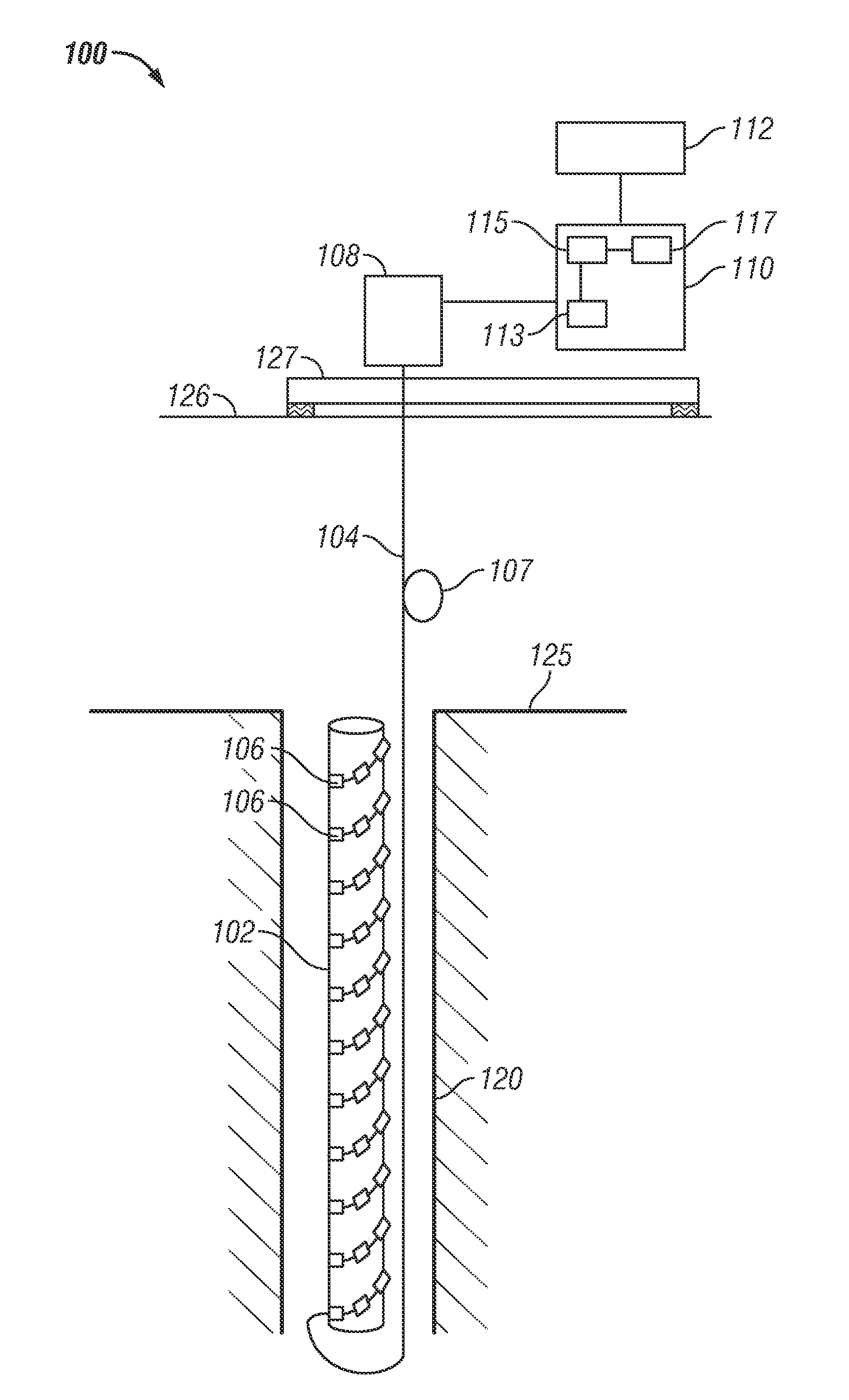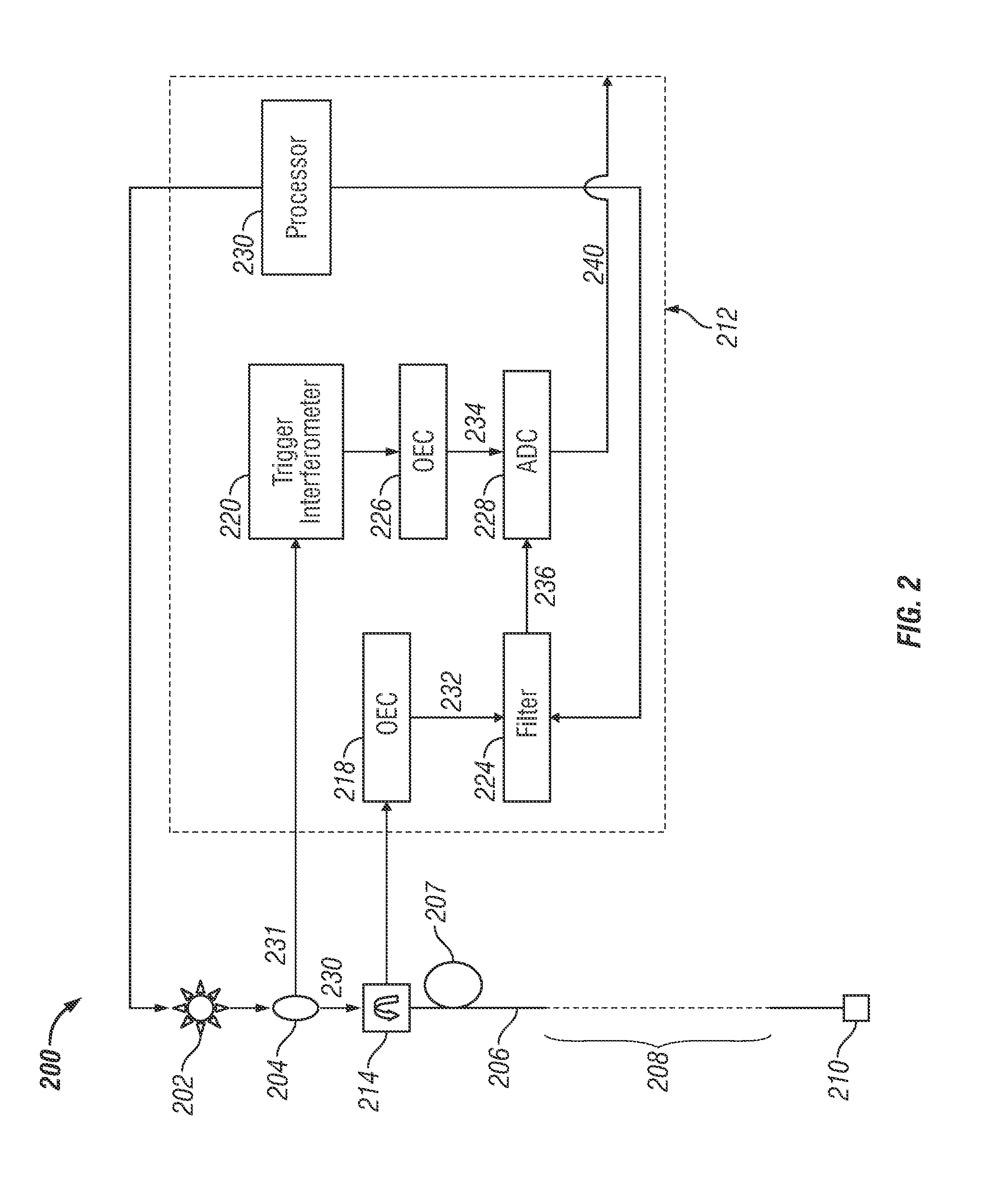Programmable Filters for Improving Data Fidelity in Swept-Wavelength Interferometry-Based Systems
a technology of swept-wavelength interferometry and filtering, applied in the field of obtaining the parameter of interest in the swept-wavelength interferometry system, can solve the problems of reducing data fidelity, limiting the utility of the system, and inadequate filters
- Summary
- Abstract
- Description
- Claims
- Application Information
AI Technical Summary
Problems solved by technology
Method used
Image
Examples
Embodiment Construction
[0012]FIG. 1 shows an exemplary oil production system 100 suitable for use with the exemplary methods and optical system described herein. The exemplary production system 100 of FIG. 1 includes a tubular 102 in wellbore 120 in optical communication with surface electronics via fiber optic cable 104. Fiber optic cable 104 includes a plurality of sensors 106. Each of the plurality of sensors 106 is configured to provide an optical signal upon interaction with a light propagating in the fiber optic cable 104. The fiber optic cable 104 is wrapped around the surface of the tubular 102 and each of the plurality of sensors 106 is thereby attached at a particular location to tubular 102. A change in a parameter, such as strain or temperature, at the particular location is therefore detected by the sensor attached at or near the particular location, which thus provides a signal corresponding to the detected change in parameter. These signals may be processed at surface electronics to obtain ...
PUM
 Login to View More
Login to View More Abstract
Description
Claims
Application Information
 Login to View More
Login to View More - R&D
- Intellectual Property
- Life Sciences
- Materials
- Tech Scout
- Unparalleled Data Quality
- Higher Quality Content
- 60% Fewer Hallucinations
Browse by: Latest US Patents, China's latest patents, Technical Efficacy Thesaurus, Application Domain, Technology Topic, Popular Technical Reports.
© 2025 PatSnap. All rights reserved.Legal|Privacy policy|Modern Slavery Act Transparency Statement|Sitemap|About US| Contact US: help@patsnap.com



